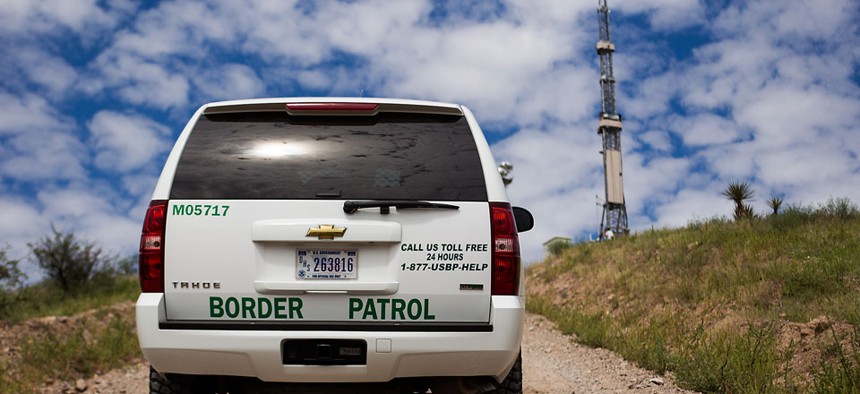Finalists Exhibit Tech for $465 Million Virtual Border Fence

Customs and Border Protection currently uses some surveillance towers along the Mexican border. United States Customs and Border Protection
The installation of more surveillance towers has drawn rare bipartisan support in the immigration reform debate.
After holding demonstrations with select vendors, the Obama administration is expected to pick a contractor by year's end for a $465 million high-tech border barrier -- a key component of any immigration reform deal.
The eight and a half year Customs and Border Protection project aims to dot Arizona with video surveillance turrets that can spot illegal crossings. The “integrated fixed towers" will supersede an earlier attempt at a virtual fence costing more than $1 billion, the Secure Border Initiative network, that relied on many one-size-fits-all interconnected towers. SBInet, conceived in 2005 and cancelled in 2011, was plagued by malfunctioning cameras, delays and cost-overruns.
"One of the unique and innovative approaches of this acquisition strategy is requiring demonstrations during source selection," CBP spokeswoman Jenny Burke said. "The program has successfully completed the demonstration phase of the source selection process and is preparing for final proposal evaluation."
A solicitation for bids in April 2012 attracted more proposals than anticipated so CBP pushed the scheduled award date from September to December, agency officials said this week.
Acquisition policies bar CBP from disclosing the number of submissions and the names of the finalists that presented their technologies. According to federal databases, interested vendors included EADS North America and Rapiscan.
The new tech strategy involves deploying "remote sensors on fixed towers, with communications bringing the sensor information back to a geographic display in a command center," Burke said.
The system must able to generate maps depicting multiple, simultaneous incidents, according to last year’s solicitation. It should automatically flag any humans traveling on foot, being carried by animals or moving in vehicles. Video is required to be transmitted in near real-time to CBP personnel at remote workstations so they can dispatch authorities.
The Senate passed an immigration overhaul late last month that would demand a lot more of this type of technology at a high price point, including 50 integrated fixed towers in Arizona; 33 in Texas and three in San Diego. Other reinforcements would include additional drones, thermal imaging systems and night vision goggles. Combined with law enforcement and physical fencings costs, the total border security tab would be $46 billion.
Odds that the Republican-dominated House will approve the same bill are reportedly low because the majority party opposes provisions granting legal status to almost 11 million foreigners here illegally. But the installation of more surveillance towers has drawn rare bipartisan, cross-chamber support.
Some former U.S. immigration officials say the Senate plan overlooks CBP’s accomplishments in high-tech surveillance during the past five years -- accomplishments taxpayers have already paid for.
“There is such a great deal of investment that has already taken place along the border, with a tremendous amount of support, bipartisan support, through the appropriations process,” said Doris Meissner, former commissioner of the then U.S. Immigration and Naturalization Service during the Clinton administration. "SBInet really failed and it was a very large expenditure of money, most of which didn't pay off, but they did learn from it, and they have since been employing these technologies that are available on the market.”
Today’s lawmakers have no real grasp of the ongoing efforts, she said.
The integrated fixed towers project is "an incredible example of the unreality of the debate that's going on in the Congress as compared to the results and the return on investment," said Meissner, now a senior fellow at the Migration Policy Institute, a nonpartisan organization. "I think that what the Senate has done on border technology is overkill” and largely fueled by politics.
Government auditors and critics have expressed skepticism that the new plan will outperform SBInet, however, because both initiatives have banked on equipment withstanding harsh terrains.
CBP officials say the second try will use only proven, ready-to-go technologies that can hold up in Arizona's extreme environmental conditions and that are positioned where cameras have clear visibility.
The recent demonstrations were intended to evaluate each system's "maturity," or how prepared the technology is for manufacture and use, according to contracting materials. The trials were conducted to ensure the technology is stable and lives up to what each company proposed.



